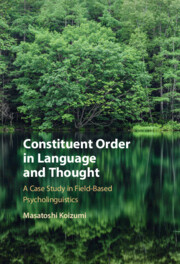It is known that consonants can act as boundary markers when they are located at the left edge of a prosodic domain, helping listeners to parse incoming speech. To achieve maximum efficiency in marking out boundaries, those markers should be acoustically salient. In Element Theory, domain markers are represented by the elements |H| and |ʔ|. Being inherently voiceless, these elements stand apart from the other elements, which are spontaneously voiced. Most languages show a preference for incorporating |H| or |ʔ| into segmental structures which stand at the left edge of domains. This paper challenges the universality of this view by analysing data from Kaqchikel, a K’iche’an language with a bias for marking the right edge of domains rather than the left. The marker in question is intense/prolonged noise which, in Element Theory is represented by |H|. The |H| element is present in fortis fricatives and aspirates, and in Kaqchikel it regularly appears in segments at the right edge of prosodic domains where it serves as a domain boundary marker. Boundary marking in Kaqchikel is analysed here using a Precedence-free Phonology approach to melodic structure (Nasukawa 2016) in which the linear ordering of segments is determined by the hierarchical organization of melodic units (elements) within a unified melodic–prosodic structure.
